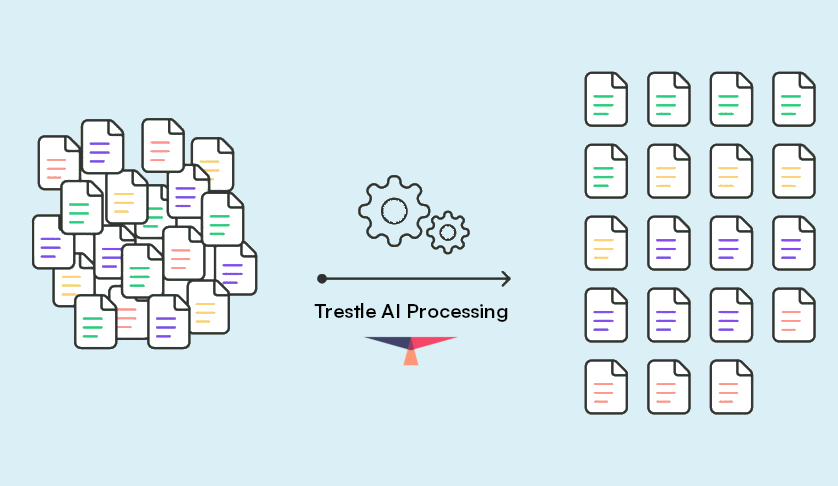Transparency and Accountability Lessons To Learn From Non-Construction Industries


More and more businesses are focusing on increasing efficiency and productivity. Large companies — such as Google, Johnson & Johnson, Toyota, and Boston Consulting Group (BCG) — have clear and efficient processes in place that let different departments collaborate and make efficient business decisions within the organization. It facilitates knowledge sharing and breeds innovation.
In construction, though, there are too many instances where the left hand doesn't know what the right hand is doing. Fortunately, many of the problems in construction have already been solved in other industries. Construction professionals can learn a lot from other industries to improve their business operations and reduce risks.
Challenges of Sub and Supplier Management
Most construction projects involve multiple departments, subcontractors, and suppliers. This can leave a lot of information and contacts to juggle, especially when working with several teams at once. For example, consider a contractor updating a commercial high-rise. Even if they're only making general renovations, they'll likely have to work with the following types of subcontractors:
- Electricians and HVAC technicians
- Plumbers
- Carpenters
- Concrete suppliers
- Sheet metal suppliers
- Flooring and drywall professionals
- Painters
The subcontractors listed above may need specialized qualifications and a schedule that meets the project's timeline. Unfortunately, many contractors struggle to manage all of this information while also keeping up with their own work. This can lead to mistakes, delays, and hiring underqualified subcontractors.
Trestle Benchmark and other tools let you analyze and manage your subcontractors. You can review their qualifications before signing contracts and store their records for years. Additionally, Trestle lets every department contribute feedback, guaranteeing a more comprehensive review of the sub's performance.
Cross-Team Transparency and Accountability
Cross-team collaboration is essential for a project's success. Construction software such as Trestle Benchmark helps bridge this gap by letting teams access subcontractors' performances and details in one interface. These tools improve how information is shared between departments and let everyone share performance feedback. Plus, you can help your teams make informed decisions at every step with analytics solutions and real-time updates.
This accountability is especially important for reducing risks and learning from past mistakes. General contractors who don't document setbacks or errors are prone to repeat themselves. Unfortunately, not enough construction teams utilize their digital tools effectively, resulting in mistakes being completely ignored.
Learning From Outside the Construction Industry
Other industries have already solved many of the problems in construction, especially with the rise of hybrid and remote work. Construction has always required different teams to collaborate and determine solutions with little in-person contact. Other businesses are finally catching up and embracing digital software and other innovations.
Learning from outside the construction industry can help you find solutions that meet your projects' needs.
Google's Cross-Functional Organizational Structure
Google and its parent company, Alphabet, are among the biggest businesses in the United States. Both companies comprise various departments with ranging focuses, including software development, artificial intelligence (AI), and product launches. These departments must frequently collaborate to guarantee cohesiveness across Google's interface and brand. However, this is easier said than done when managing such a massive corporation.
Google's solution was to develop a cross-functional organizational structure. This workforce model prioritizes "flatness" within the company's hierarchy. With no department ranking higher than the other, teams can stop stressing over the chain of command and focus on products and functionality. This company culture essentially leveled the existing hierarchy and contributed to better workplace stability and increased profits.
General contractors working on large-scale projects could benefit from a similar approach. While construction still needs at least some chain of command, placing most teams and subcontractors on a similar level can improve their approach. For instance, departments may take more accountability and pay more attention if they know they play an active role in the workflow.
BCG's Focus on Perceptions To Change
BCG performed a study of over 200 professionals, including both managers and employees. Their goal was to understand how workers respond to new workflows and procedures to reduce their resistance to change. They discovered that their reactions usually depend on the following factors:
- The type of change: Employees respond better to positive changes, such as pay raises, than they do to negative changes, such as increased workloads. Additionally, employees are less likely to actively contribute to an initiative if they don't believe it will succeed.
- Emotional relevance: Workers are more likely to resist change if it impacts them emotionally. For example, an employee may not care if they have to add two new tasks to their morning schedule. However, if these tasks prevent them from taking lunch with their work friends, their perception may drastically shift.
- "Change insurance:" In theory, professionals can only accept a certain amount of change at once before it impairs their workflow. So, while an employee can likely adapt to new software, you shouldn't expect them to do so while also taking on a new project, supplier, and office space.
- Employee independence: Employees naturally want to feel at least some form of control, especially when managing workplace stress. The study revealed that employees are more likely to embrace a new initiative if they are included in the decision-making process.
BCG's study highlights the most significant challenges of introducing new work initiatives. Though every employee is unique, many will automatically resist change if it seemingly uproots their workflows and work-life balances. However, organizations can get more teammates on board by including them in the decision-making process, highlighting the positives, and introducing changes gradually.
General contractors often have to change their procedures multiple times throughout projects, which can add to employees' stress. However, by improving cross-team communication and knowledge sharing, you can involve more people and perceptions in your decision-making process. This way, you can develop beneficial initiatives that everyone will contribute to.
Solve Problems in Construction Using Lessons From Other Industries
Many of the problems in construction have already been solved in other industries. Digital solutions, such as Trestle, utilize strategies found in similar hybrid work apps, such as the ability to share files between departments. Plus, these tools can make increasing profits and productivity easier than ever with construction specializations.
Schedule a demo of Trestle Benchmark to tackle your construction industry challenges.
Keep Reading





